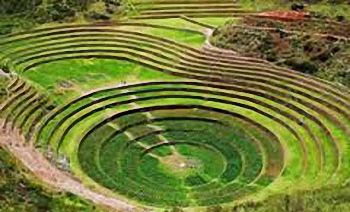Machu Picchu energy vortex has a worldwide renown for its massive potency, which evokes an overpowering sense of awe and admiration as the beholder is caught in the esoteric precincts of the vortex. Read our guide for more facts and information…

The phenomenon of energy vortex involves an electromagnetic subterranean flow of energy. Which is ascribed to healings, epiphanies and visions experienced by people who are rapt within the mysterious boundaries of the vortex activity.
Machu Picchu, situated in the core of the Andes, at Peru, is a distinguished energy vortex on the earth. Soaked in Mayan history, this place is also known as the ‘Lost City of the Incas’ as it is emblematic of the Inca Empire.
History of Machu Picchu
The site of Machu Picchu is considered sacred because the mountains in the region held a particular religious meaning to the Incas. An Inca Emperor named Pachacuti constructed the site in the 1400’s, but the Incas deserted the place in the subsequent century. It was rediscovered by Hiram Bingham, a Yale archaeologist in 1911.
The five square-mile site is said to have astrological alignment and is believed to be an important place of pilgrimage for the spiritually inclined. Thought to be the most inscrutable and telluric spot in the southern hemisphere. Machu Picchu has a magical air and a spectacular landscape, covered by green forests and surrounded by mountain peaks.
Unique double Machu Picchu energy vortex
It is a chief energy vortex that is considered to be very powerful because it sits atop the center of two energy vortices. It is said to bear a resemblance to the energy chakras found in the human body. The sacred energy of the double vortex is highly potent and is primarily ascribed to a female goddess. Its electromagnetic nature is attributed to the presence of a magnet vortex accounting for the inward pull and an electrical vortex accounting for the outward pull.
The concentric energy rings that make up the double vortex serve as templates for the magnetic and electrical vortices surrounding Machu Picchu. The inner electrical vortex has a diameter of about 2 kilometers and flows in the counter-clockwise direction. The magnetic vortex has a diameter of 7 to 10 kilometers and flows in the clockwise direction. Therefore, the resultant telluric flow is powerful.
Protection of the vortex energy
The remote location of Machu Picchu, much above the canyon of the Urubamba River and its almost impassable terrain has served to protect the site. It is said that extra-terrestrials have been protecting the energy vortex over the millennia and that planetary guardians kept the site hidden for over six centuries.
Even the acquisitive Spanish Conquistadors, who were aware of Machu Picchu’s legends, could never plunder the site, despite its desertion by the Incas in the 1500’s.
Spiritual retreats to Machu Picchu
Basically, an astronomical observatory, Machu Picchu has three important sacred buildings namely:
- The Temple of the Sun;
- The Room of Three Windows;
- The Intihuatana.
Intihuatana stones were considered religious focal points established by Shamans, who are the intermediaries between the physical world and spiritual world, and are capable of entering other dimensions to render balance and bring about restoration.
In Machu Picchu, the Intihuatana houses the god of Force and serves as a solar calendar, precisely indicating the winter solstice. The Inca Trail winds through serene spots associated with powerful energy, and the Wild Spirit Mountain named ApuSalkkantay is considered to be the guardian spirit of the trail.
Inca’s felt that the energy of the male guardian spirit bonded with Machu Picchu’s female energy. Pilgrims claim to experience this energy along the pristine track. Spiritual retreats to the place allow the pilgrim to take part in ceremonies and meditations and use the sacred energy in the site to discover the sacredness of self.
Pilgrims have observed that the grandeur of Machu Picchu and the Inca Trail are too immense to capture or put in words. It evokes powerful emotions, reverence and awe, accompanied by a sense of accomplishment.




